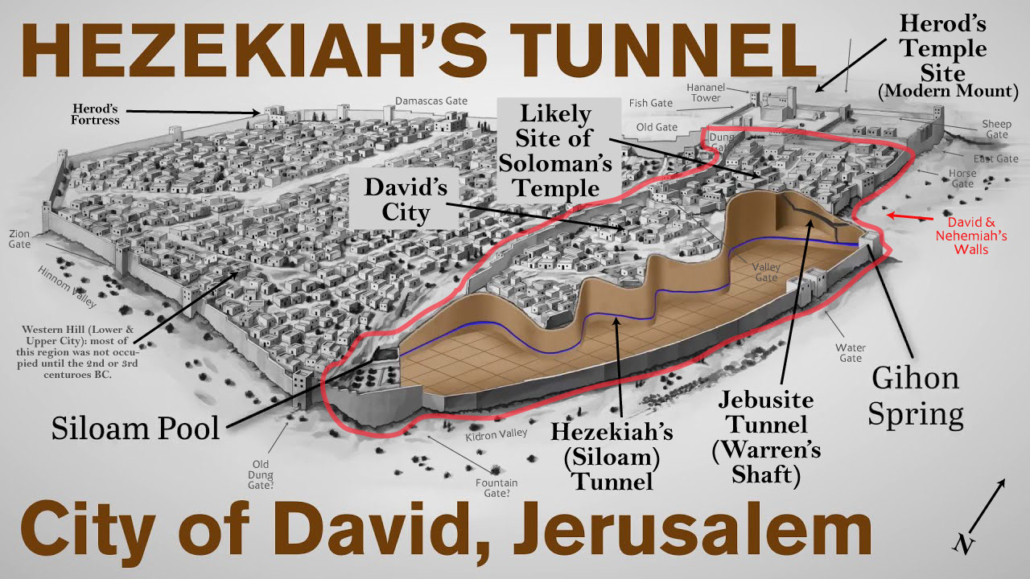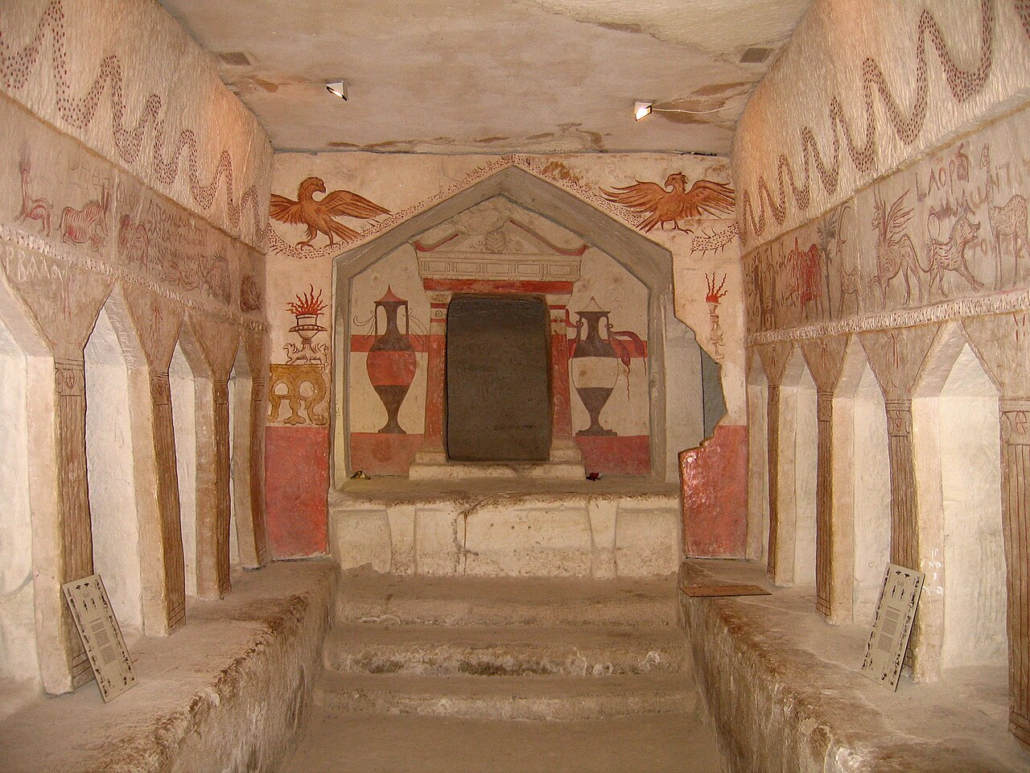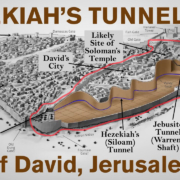The Geologic Underworld of Jerusalem: The Caves, Tunnels & Tombs of Mount Zion & Israel’s Heritage
Overview
Jerusalem’s history is richly intertwined with the unique geology up on which in sits. From it’s spectacular abundance of limestone’s from which it is built, to its karst systems housing the spring water
Hezekiah’s Tunnel
The ancient water systems of Jerusalem have a complex history. The main water source of the original City of David was the Gihon Springs located at the base of the eastern slope of the city in the Kidron Valley. The Gihon Springs provided water year round by gushing forth several times a day. This water then naturally flowed into the Kidron Valley. In the earliest days of Jerusalem’s occupation, reservoirs where built to collect the water from the Gihon Springs. Three systems were eventually designed to use this water: The Warren’s Shaft, Siloam Channel (Tunnel) and Hezekiah’s Tunnel.
These three water systems continued to bring water to the city of Jerusalem until the days of the Hasmoneans and Herod. During the last century BC and the first century AD, aqueducts were built to transfer water into Jerusalem from the southern hill country of Judea from around Hebron and Bethlehem.

Hezekiah’s Tunnel
Hezekiah’s Tunnel, part of Jerusalem’s water system, is located under the City of David. It connects the Gihon Spring—Jerusalem’s fresh water supply—with the Siloam Pool. According to 2 Chronicles 32:2–4 and 2 Kings 20:20, this tunnel was dug during the reign of King Hezekiah of Judah to prepare Jerusalem for the imminent attack of the Assyrian king, Sennacherib. In the Bible, Hezekiah redirected the water through old and newly dug Jerusalem tunnels.

How Zedekiah’s Cave was Discovered
Zedekiah’s cave was possibly the biggest quarry of Jerusalem in antiquity, yet it was abandoned in the Middle ages, and eventually even its location was forgotten. It was rediscovered in 1854 by American missionary James Turner Barclay who followed the rumors of a cavern near Damascus gate. About 100 m east of the gate his dog fell into a pit. Barclay noticed the pit was quite large, but he did not want to draw any attention. At night he returned with his sons and torches. Sneaking in and operating the lights, they were the first to document the caves in modern history. They also recorded a human skeleton and batches of bats hanging from the ceiling, which kept much of the public from visiting the cave.
History of Zedekiah’s cave

The cave was surveyed by several scholars and expeditions and is still under development. In fact, about a third of the cave is still filled with debris. Early researches suggested the Quarry dates to the time of King Solomon, and so it was called “Solomon’s Quarries”. Furthermore, the Free Masons order adopted the site claiming the founders of their order formed this quarry. To this day they conduct annual gatherings at the site. Current research suggests the quarry was not in use before Roman times, revoking its attribution to King Solomon or King Zedekiah.
Touring Zedekiah’s Cave
The cave is maintained by the Municipality of Jerusalem and it charges a humble admission fee. A wide flight of stairs and lights are installed in the main halls of the cave. At one of its lowest point a small flow of water is identified in Jewish tradition as “Zedekiah’s Tears”. By local tradition these are the tears of the ongoing cry of Zedekiah for the Babylonian conquest and destruction of Jerusalem.
Cave of the Patriarchs
The Cave of the Patriarchs or Tomb of the Patriarchs or Mosque of Abraham’), is a series of caves situated 30 kilometres (19 mi) south of Jerusalem in the heart of the Old City of Hebron in the West Bank. According to the Abrahamic religions, the cave and adjoining field were purchased by Abraham as a burial plot, although most historians believe the Abraham-Isaac-Jacob narrative to be primarily mythological. The site is considered a holy place in Judaism and Islam. (add pics and find story of group that explored this…)
Col. Richard Meinertzhagen, an officer under the command of General Allenby visited the tombs when the British captured Hebron in November 1917. He entered the subterranean caverns through an opening on the southwestern side of the famous above-ground structure to make sure there were no enemy forces hiding out there. Read about other visits to the tombs here

Beit Guvrin-Maresha National Park
Beit Guvrin-Maresha National Park is a national park in central Israel, containing a large network of caves recognized by UNESCO as a World Heritage Site.
The Sidonian burial caves were the family tomb of Apollophanes, the leader of the Sidonian community in Beit Guvrin. The Sidonian caves are the only ones that are painted inside. The caves were burial caves for the Greek, Sidonian and Edumite inhabitants of Beit Guvrin. The first and largest cave has paintings of animals, real and mythic, above the niches where the corpses were laid. A cock crows to scare away demons; the three-headed dog Cerberus guards the entrance to the underworld; a bright red phoenix symbolizes the life after death. The Tomb of the Musicians is decorated with a painting showing a man playing the flute and a woman playing the harp.


The largest bell caves are in the east part of the park. They have been dug since prehistoric times, the excavations reaching their zenith in the Hellenistic period and during the Byzantine and Early Arab Period, when blocks of chalkstone extracted from the caves were used for construction work (buildings, etc.). The bell caves consist of limestone in their upper-layer (to a depth of about one to two meters), beneath which is rock consisting solely of a beige-colored, soft chalkstone, utilized by its early inhabits for carving caverns and dwellings. There are numerous bell caves within the park grounds and events are held in one of them. They are large (over 60 feet (18 m) high), airy and easily accessible
Add a section on the main aquaduct.

